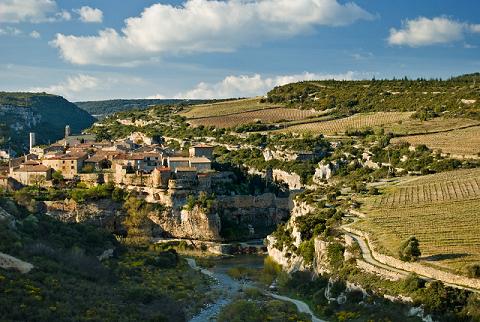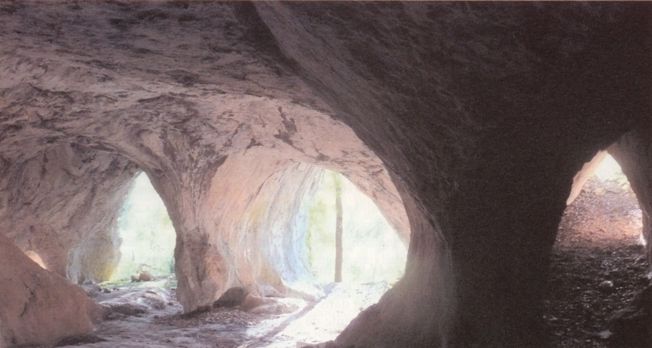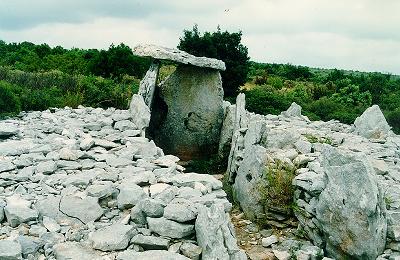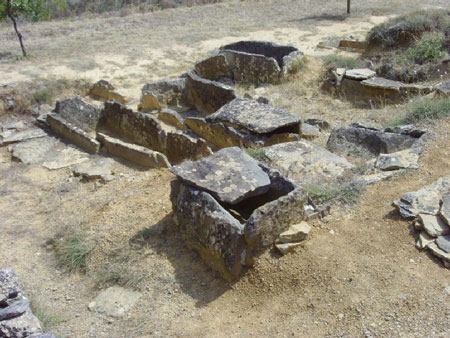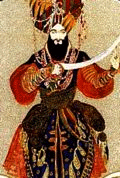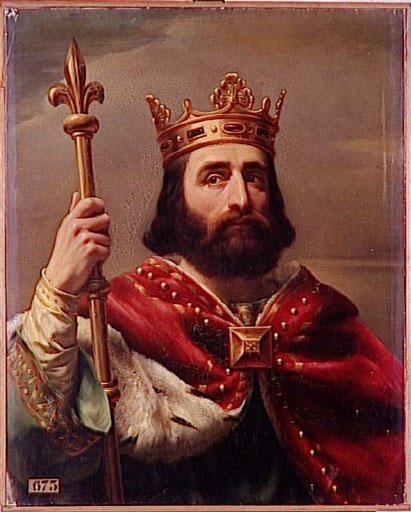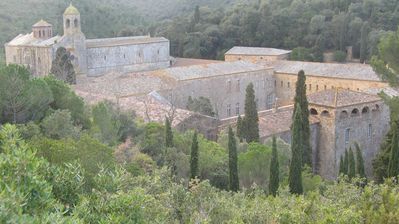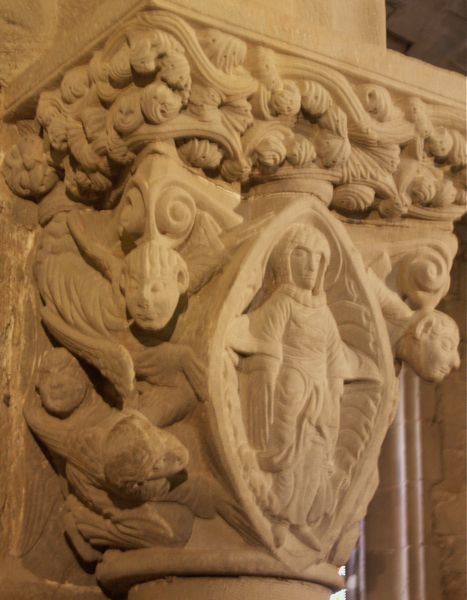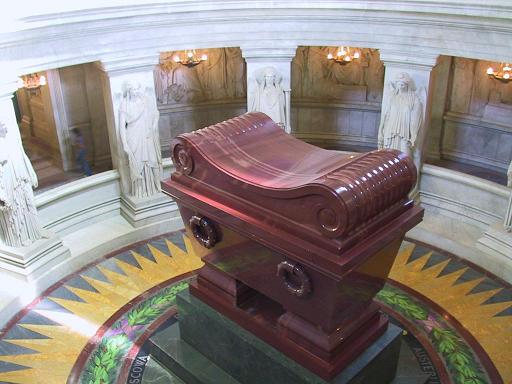| photos of the house | photos of the village | historical strall paths | swimming spots | outdoor activities | cultural events |
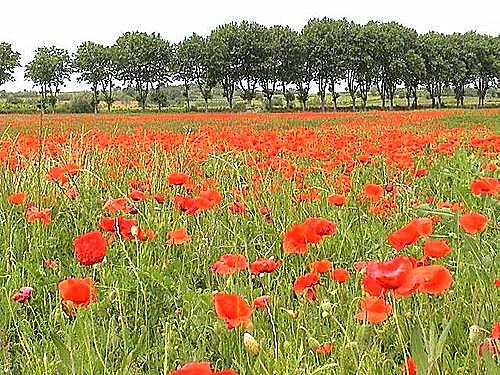 |  |  |  |  |  |
šššššššš
HISTORICAL STROLL PATHS
We propose below ideas of historical walks, they are classified chronologically
š Prehistoric walk:
(The history of Languedoc began 72 million years ago with the largest most complete dinosaurus ever found in France, at Esperaza. It continues with traces of prehistoric activity in Carcassonne - about 1,500,000 years B.C., with the man of Tautavel, caves, dolmens, menhirs of the Minervois and the necropolis of Mailhac - from the stone age to the iron - age).
You can visit the museum of Esperaza in the countryside around Carcassonne,the Museum of Tautavel, discover the menhirs and dolmens of Minervois and then finish by Bize caves and the necropolis of Mailhac. You can further complete by one of the rooms of the Museum of Narbonne devoted to prehistory
musée grotte de Bize musée de dolmen
d'Esperaza minervois Tautavel du Minervois
š Roman walk:
(Narbonne, first colony out of Italy and daughter of Rome, is the first Roman city of Gaule. In the year 118 B.C., it becomes capital of the narbonensis province. Romans, seduced by a region which recalls them Tuscany, settle in the area for five centuries. they build the Via Domitia linking Narbonne to Rome, develop the architecture of the city, implanting Amphoralis pottery workshops, exploit the marble quarries and develop the port of Narbonne to transport products from Gaul to Rome).
You can see remains of Via Domitia, the Roman museums and horreum at Narbonne , the Roman villa, the amphoralis museum, the oppidum of Enserune ...
In 1982, Rome gifted Narbonne of a wolf to celebrate this filiation.
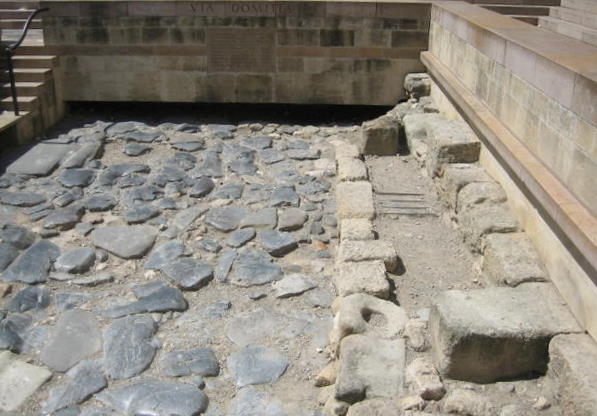
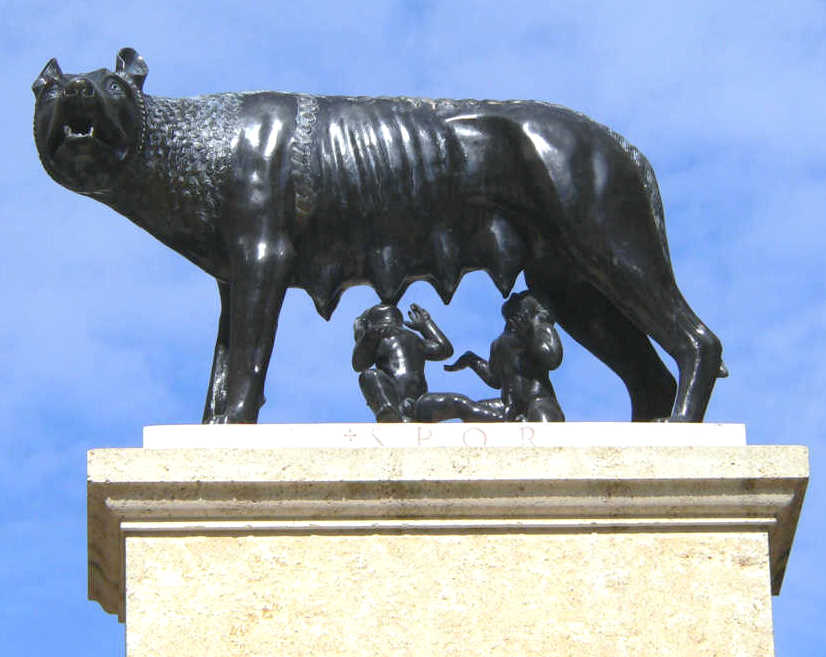
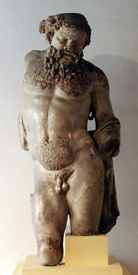
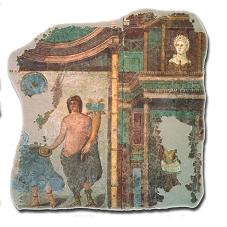 via domitia louve de Narbonne musées de Narbonne
via domitia louve de Narbonne musées de Narbonne
š Visigoth walk:
(Franks settle in the country. At the same time, Visigoths invade the Languedoc and settle here for three centuries on a powerful and rich territory that extends from South of Loire to Toledo, whose capital is Toulouse, until the defeat of Alaric, then they withdraw in their spanish kingdom. They completely empower their kingdom from the tyranny of Rome and name it Gallia. They are of Aryan confession and welcome in their kingdom people persecuted by the barbarism of Franks or by Roman Church. They enact bases of the French civil code with the Breviary of Alaric, which will be first applied on their land, and constantly during the middle ages. This text brings a fundamental progress and constitutes a world where barbaric violence is stopped by normative right.)
You can walk in their footsteps in the mountain of Alaric, in Rennes le Château, or discover the necropolis of Moural des Morts.
Rennes le Château Nécropol of Moural Montaigne d'Alaric
des Morts
š Saracen walk
(After the departure of Visigoth kings in eight century, Narbonne becomes smoothly Muslim in 719. Saracens represent the most advanced civilization at the time. They allow Christians and Jews, after payment of a tithe, to practise openly their religion. They bring to Languedoc the civilisation of the Umayyads : singing, poetry, calligraphy, alchemy, astrology, algebra.... and mark this county permanently with their culture. After several battles, Franks are progressing slowly in Languedoc, but Narbonne still resists. Accordingly, they lay siege of Narbonne in 737 but Muslims, Jews, Visigoths and Gallo-Roman resist together against bloody Franks. The impressive Maghreb army sails toward the Bages-Sigean pond while Arab Cavalry of Spain crosses the Pyrenees in direction of Portel des Corbières. Arising from the massif de Fontfroide, the army of Charles Martel falls on the Saracens in the gorges of the River Berre, pursues them up to Durban mountain and down to Port Mahon at sea, putting the Arab expansion in the future Kingdom of France to an end. Therefore, Narbonne remains Arabic for 40 years.)
You can follow their footsteps in the massif of Fontfroide, in the gorges of the Berre, or around Port Mahon, or Bages-Sigean pond.
Calife saracen music Charles Martel
š Churches and abbeys walk
(Carolingians remain only 3 years in Narbonne county, install local lordship and encourage expansion of the Church of Rome. Between 8th and 11th century feudal lords tear for possession of land and finally the viscounties are born -Carcassonne, Narbonne, Béziers, Albi, Toulouse-. Catholic Church confirms its power over the same period, thanks to Carolingians support, than local lords backing. The Roman Church develops many parishes with the establishment of ecclesiastical authority, buids beautiful architectural jewels in Aude and performs feats in the field of irrigation... In the musical field, during the 11th century, abbeys provide musical education for civilians, and form the first troubadours. poets and musicians. Conscious of their role as social than philosophical, troubadours interpret their poetic works in old occitan at manorial courts of the country of Oc. They discuss two topics : fin'amor or courtly love and social raise or critic. This culture is to broadcast soon throughout Europe.)
You may contemplate the architectural wonders in the abbeys of Fontfroide, Lagrasse, Caunes-Minervois, the churches of Pouzols, Ginestas, Rieux Minervois, or admire the perfect geometry of Montady.. You'll understand Troubadour culture by visiting the Museum of medieval instruments.
Fontfroide Rieux Minervois Caunes-Minervois
š Cathars walk
(from the 10th to the 13th century, catharism extends throughout Europe, in response to a catholic dogma judged too ostentatious, corrupt, distant of first values of christianity. Languedoc knows the more exacerbated Catharism : all classes of society convert. In the rich and vast South West of France, different people co-exist in tolerance, gathered by their language "OC", and show ambitions of independence. Their territory stretches strategically from the Pyrenees to the Massif Central, is administered by the count of Toulouse, great vassal of king of France, and very close to the King of Aragon. The Pope concludes to excommunication of the so-called perfect or good men. He creates the Dominicans order and the Inquisition to eradicate this belief. Facing a too deep implantation in Languedoc, the Pope launches in 1209 the crusade against the Albigenses. The king of France refuses however to personally throw his army against his vassal and chooses three of his great Lords to gather the army of crossed knights. Their first action is the sacking of Béziers, followed by the seat of Carcassonne. After theses, the army is placed under the orders of Simon de Montfort. While the count of Toulouse Raymond VI makes amends, the vicount of Carcassonne is thrown in jail, citadels fall one after the other and in 1321, after 112 years of war, Guilhem Bélibaste, the last known "perfect" is burned. The scope of this crusade is historic : Languedoc is attached forever to the Crown of France, which enlarges the Kingdom, provides new access to the Mediterraneans sea, the Pyrenees and enriches the kingdom. the Roman Church strengthens its power after this victory (Cathedral St Just and St Pastor, Palace of the archbishops of Narbonne, Béziers...), it establishes new preachers orders and implements inquisition throughout Christendom.)
You can follow the footsteps of Cathars in many major sites like the high city of Béziers, the castle of Carcassonne, the city of Minerve, the castle of Villerouge-Thermenès (and Montségur, Lavaur, Toulouse, Avignonet-Lauragais, Albi) but also the sites of lesser significance as the castles of Peyrepertuse, Queribus, Puylaurens... modified by St. Louis.


 Béziers Monument to City of Carcassonne
Béziers Monument to City of Carcassonne cathars in Minerve

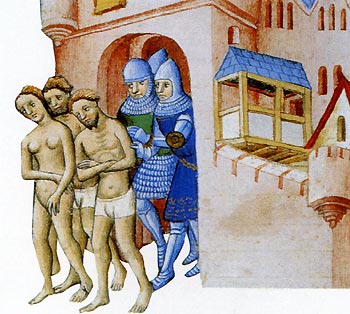
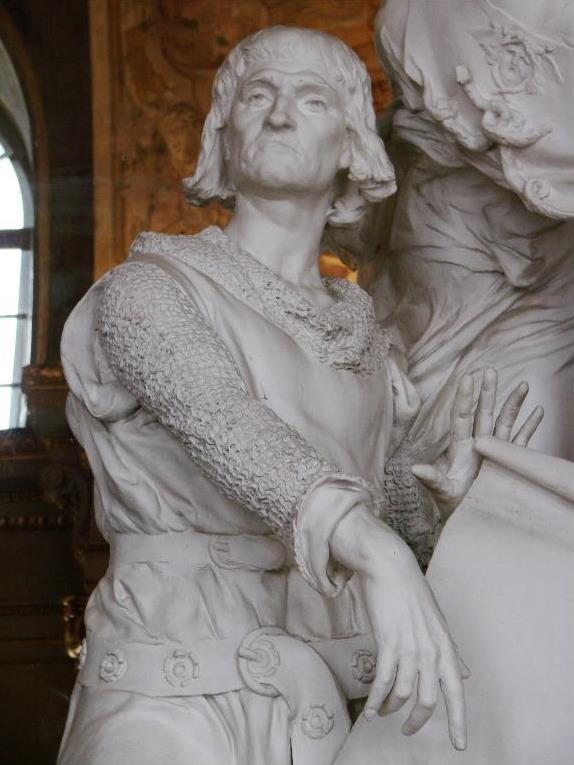 Simon of Montfort Reddition of Raymond VI
Simon of Montfort Reddition of Raymond VI Carcassonne
Languedoc falls gradually asleep under royal tutelage, but faithful to its reputation of humanist earth, it ignites with each war of religion. It wakes up again under the reign of Louis XIV, for a fourth cultural and economic development.
š Molière balad
(Around the end of 1645, Jean Baptiste Poquelin, with a few comedians remaining of the "Famous Theatre", visits every corner of Languedoc ; He learns his job of actor, perfects his comic game playing for the most various audiences and becomes director of the cast. In 1650, the General States of Languedoc are held in Pézenas and the company is selected to present a show. Three years later, he becomes actor for the General States and the Prince of Conti, the third most important character of the kingdom, and changes his name for Molière. An era of prosperity and inspiration opens for the company, until the mystical crisis of the prince, who turns to devotion under the influence of his confessor, in 1657. This is the end of the protection of the Prince and Molière leaves the county with his company. He returns to Paris and becomes Louis XIV's favorite playwright. He will entertain the court with his most famous plays such as "les précieuses", "Sganarelle and the imaginary cuckold". Some say that his plays are based on events he saw or lived whilst he worked in Languedoc. Considered as the soul of the "Comédie Française", he is still the most played author in France and has reached the pantheon of great authors like W. Shakespeare. As one says "If Jean-Baptiste Poquelin was born in Paris, Molière was born in Pézenas".)
You can attend performances of these plays at the Molière Festival organized each year, visit the Museum of Vulliod, or feel his presence in randoming through streets and mansions of the 17th century that draw up the Molière tour in Pézenas.
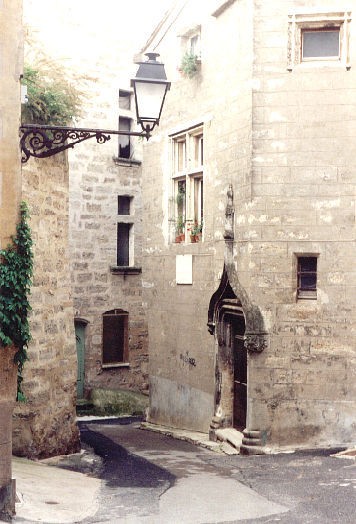
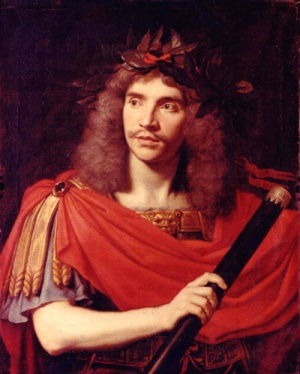
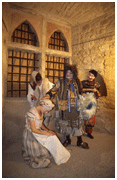 Pézenas Molière Piece of theatre by Molière
Pézenas Molière Piece of theatre by Molière
š Canal du Midi stroll
(The idea of linking the Atlantic to the Mediterranean, to avoid the detour via the coast of Spain (3000 kms to go), the Strait of Gibraltar, storms and the perils of attacks by Barbary, is an idea expressed since roman times without being able to ensure the feasability of this junction. In 1662, Pierre-Paul Riquet, seeks to bring water to the highest point of the future Canal (Naurouze threshold) in a share point so that it flows towards Mediterranean and Atlantic slopes. His knowledge of the Montagne Noire and streams leads him to imagine a supply system based on diversion of water by the capture of several rivers and streams. The Canal du Midi will be inaugurated in 1681, due to the persistence of its architect. The result of exceptional men (King Louis XIV, prime minister Colbert, inventor Riquet and the General Commissioner of Fortifications Vauban). It is also the result of a social policy ahead of the time : wages are monthly paid and higher than elsewhere, workers aren't selected under 20 and after 50 years. Days of nonworking, sickness, rain, public holiday, sundays are paid. Housing is made available to all the workers. Pierre-Paul Riquet is clearly a great precursor. This social policy allows him to achieve this feat in record time in the light of the technical facilities of the time. In 1789, revolutionaries give "the Royal Canal in Languedoc" the name of "Canal du Midi". In 1898 the state legislates and binds in a single channel all channels from Gironde estuary to the mediterranean sea. Channel brings communication, transportation and economic development, between mediterranean sea and atlantic ocean. Wines, cereals, silk, salt transit, even at the time of steam locomotives. However, the advent of the engine and oil tankers in 1925, changed the destiny of the Canal, and freight is abandoned in favour of boating.
The Canal du Midi is extraordinary by its scope, the ingenuity of its supplying system and the number of titanic work that you can contemplate at Le Somail, the waterworks of Fonséranne, the aqueduct of Cesse, the channel-bridge of Argent-double, the Malpas tunnel... Since 1996, the Canal is classified in the World Heritage list by Unesco. It's the oldest canal of Europe still operating.
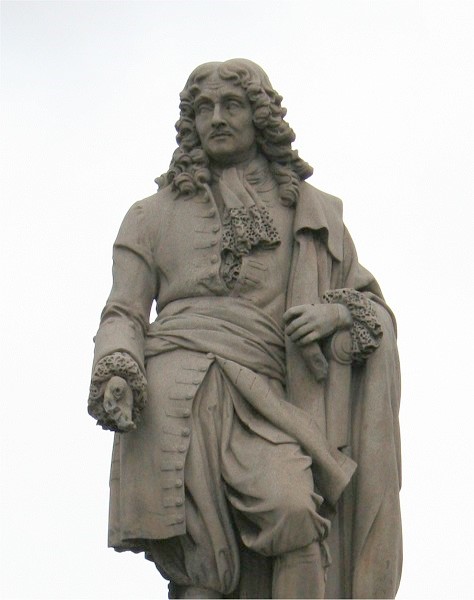
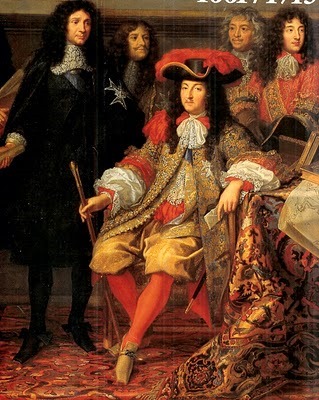
 Pierre-Paul Riquet Louis XIV Vauban
Pierre-Paul Riquet Louis XIV Vauban 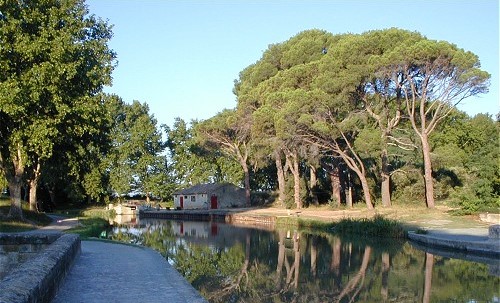
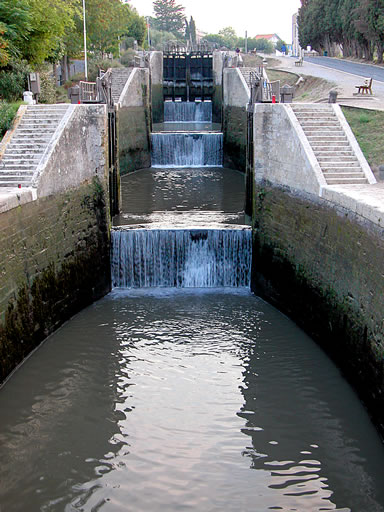
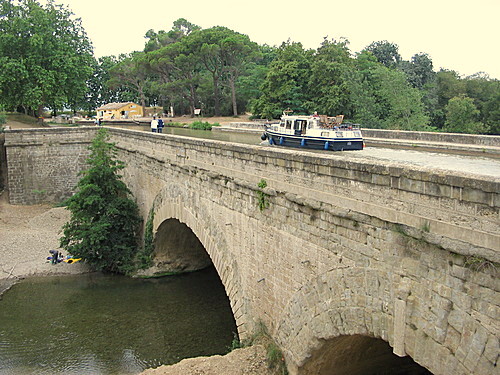 junction around Ginestas écluses of fonseranne suspended bridged
junction around Ginestas écluses of fonseranne suspended bridged
š the king's quarries walk :
Red marble quarries in Caunes Minervois were already appreciated by Romans - ancient villas of Minervois and great mosque of Cordoba, Spain -. They were then used by medieval sculptors -pre-romanesque capitals and columns in the Abbey of Fontfroide -. in 1615, a sculptor of the Gena riviera resume control of the red marble exploitation. Trade multiply between Carrara -white marble- and Caunes while religious buildings of south of France take advantage of this shimmering pattern for their columns or elements of altarpiece. In 1666 quarries companies require "Crimson" and "turquin" marbles for sculptures at Versailles. The opening of the Canal du Midi in 1681 facilitates transport up to the Garonne River, then by sea from Bordeaux to le Havre and sailing up the Seine to Paris. A path is constructed by the States of Languedoc to reach the port of Puicéric. A royal decree in 1700 ensures the royal monopoly of the material and Louis XIV books the Malecasse career for his own purpose -today a protected site-. The most remarkable royal or imperial monuments from Louis XIV to Napoleon III, highlight Caunes marble : Fontainebleau, Versailles, Marly, the Louvre, the Invalides, the Carroussel, the opera of Paris... Sold in 1807, five main careers are awarded to a marble company that exports marble through France and abroad, giving the village an international and deserved fame. Since 1965, the blocks are directly transported by trucks towards Italy and are widely disseminated in the United States, Arab countries and Japan.
You can visit the quarries at Caunes-Minervois
Caunes-Minervois mosquée de Cordoue castel of Versailles the Invalides
(Spain)
š Vineyard road :
Wine culture develops in the 18th and 19th centuries in Languedoc, due to the harbour of Sete, the Canal du Midi, railroad, industrialization of France and improvement of methods of conservation. Close to the 20th century, the region provides about 40% of French production of wine at the time, the area becomes richer and vast chateaux are born, many jobs are created in the induced sectors. Smallholders self-organize : the cooperative cellar of Marausson is built in 1905 and cooperative cellars spread in all Languedoc. From 1904 to 1907, crops are too abundant, wine courses and sales decline inexorably, unfair competition of fake wines adds. In 1907, the destitution comes back, it affects the entire population of Languedoc. In 1907, winegrowers of Argeliers led by Marcelin Albert revolt and ask to speak to members of parliament in Narbonne. Movement is accelerating, gaining scale and brings together half a million people in Montpellier. The whole region seems to defy the president Clémenceau. The republic sends the army. Wine revolt doesn't wane, 600 mayors announce their resignation and lead a revolt of elected representatives ; The news of the planned arrest of all members of the Argeliers Committee sparks things off ; This repression revolts the 17th regiment of infantry soldiers. They mutiny and walk to Béziers. On-site they settle down and fraternize with the people who feed them. The national assembly debates bill against fraud on wine without Marcellin Albert. Clemenceau persuades him to go and calm down the rebellion, discredits skilfully this man in medias and thus manages to divide the Argeliers Committee. Meanwhile, Parliament adopts legislation to reduce wine fraud and promulgates the AOC ((controlled origin label). The general confederation of wine is created.
Since then, winegrowers of Aude continue to fight and accelerate the conversion of vineyards in bio. Their resistance to maintain vineyards against industrial, commercial and real estate speculation in the 20th century, has contributed to preserve the beauty of the landscapes of Aude. You wil easily fall under its spell if you take the roads of wines in Minervois and Corbières.
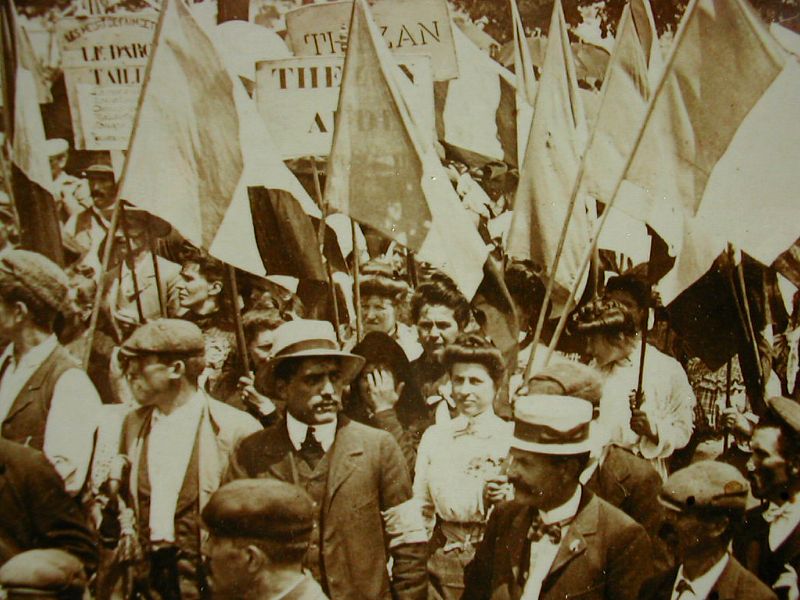
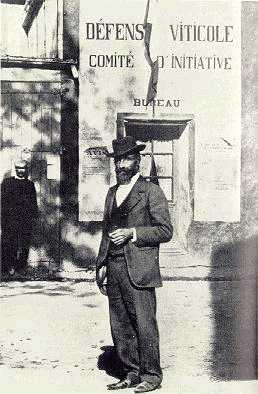
 Marcelin Albert
Marcelin Albert 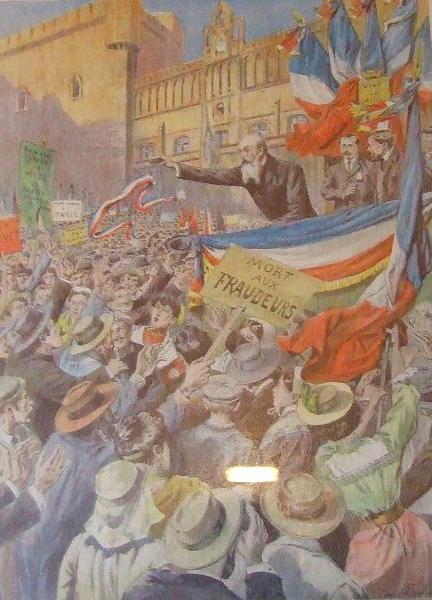

 Marcelin et Clémenceau
Marcelin et Clémenceau šššššššš
